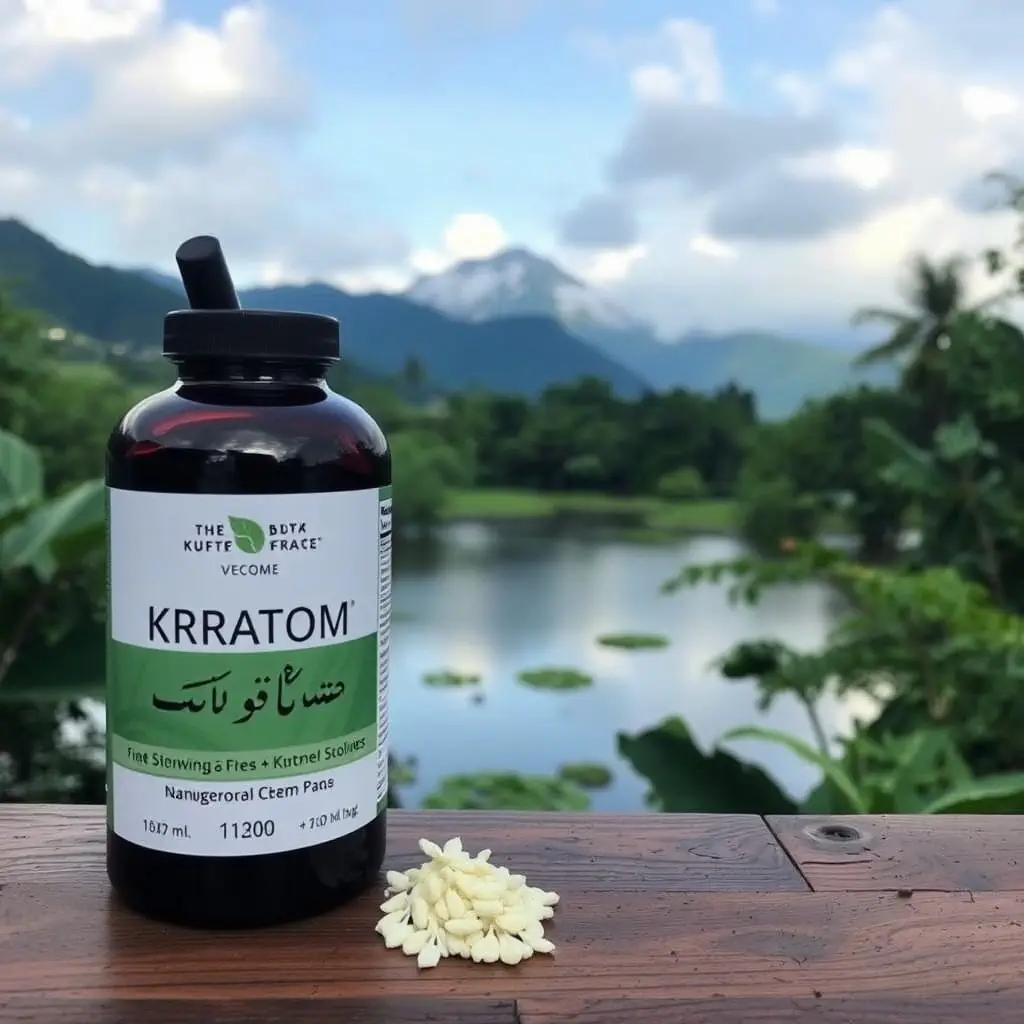Malaysian Kratom, from the Mitragyna speciosa tree, is renowned for its diverse alkaloids and potential wellness benefits, with each strain like Bali or Maeng Da offering different effects. However, when traveling with Kratom, it's imperative to verify its legal status in your destination country due to varying global laws. The United States, for example, has jurisdiction-specific regulations, and the DEA's history of considering bans illustrates the importance of staying informed about these evolving regulations. Travelers risk legal issues if they possess Kratom in countries with anti-kratom measures. To safely travel with Kratom, one should consult embassies or consulates for accurate customs information and ensure compliance with local laws. The cultivation process in Malaysia involves careful selection and drying of leaves to preserve their alkaloids, ensuring high-quality Kratom products that are sought after globally, making Malaysia a trusted source for those who can travel with Kratom responsibly. Always remember to prioritize legal considerations when transporting Kratom across borders.
Explore the intricacies of Malaysian Kratom Buds, a botanical phenomenon gaining global attention. This article unravels their origins, legal status in travel, and the meticulous cultivation journey from tree to tradable product within Malaysia’s verdant landscapes. Understanding the nuances of Malaysian Kratom is essential for enthusiasts curious about its uses, effects, and the complex legalities surrounding its transportation across borders, particularly when pondering ‘Can you travel with kratom?’ Delve into the detailed processes that shape these sought-after buds, ensuring informed engagement with this unique botanical substance.
- Understanding Malaysian Kratom Buds: A Comprehensive Guide
- The Legalities of Traveling with Kratom: Can You Bring Malaysian Kratom Across Borders?
- Harvesting and Processing: The Journey from Tree to Bud in the Kratom Farms of Malaysia
Understanding Malaysian Kratom Buds: A Comprehensive Guide

Malaysian Kratom buds, derived from the Mitragyna speciosa tree, have garnered attention for their unique alkaloid profile and potential health benefits. These buds, native to Southeast Asia, are often harvested from the dense forests of Malaysia, where the climate and soil contribute to their distinctive qualities. Understanding the intricacies of Malaysian Kratom requires a deep dive into its botanical composition and the various strains that exist within this category. Each strain, such as the popular Bali or Maeng Da varieties, offers different effects, ranging from pain relief to mood enhancement. When considering the legality and transportation of these buds across borders, it’s pertinent to be aware of local laws, including regulations on traveling with Kratom. Can you travel with Kratom? This question is crucial for individuals planning to transport or carry Kratom during travel. The answer varies by country, and it’s essential to verify the legal status of Kratom in your destination as well as in transit to avoid any legal complications. For those interested in experiencing the effects of Malaysian Kratom buds, it’s advisable to purchase from reputable vendors and adhere strictly to the recommended dosages to ensure a safe experience. Additionally, for those who wish to travel with these buds, it’s important to pack them properly and keep them sealed to preserve their potency and avoid any potential legal issues.
The Legalities of Traveling with Kratom: Can You Bring Malaysian Kratom Across Borders?

When considering the transportation of Malaysian Kratom buds across international borders, it is crucial to be aware of the varying legal statuses of kratom in different countries. Kratom, derived from the Mitragyna speciosa tree, has been subject to legal debates and regulatory changes worldwide. As of the current knowledge cutoff, some countries have fully banned kratom due to its psychoactive properties and concerns over its safety and potential for abuse. Therefore, when traveling with Malaysian Kratom, it is imperative to research the destination country’s laws regarding kratom possession and importation.
For instance, within the United States, the legality of kratom varies by state, with some states allowing its sale and use, others banning it outright, and a few having it in a legal gray area. The Drug Enforcement Administration (DEA) initially placed a ban on kratom but later retracted this decision after public outcry. Travelers should also be mindful of international laws when transiting through countries with strict bans on kratom. Airports and customs officials have the authority to confiscate kratom, and travelers may face legal consequences if found in possession of the substance in prohibited territories. To safely navigate these legalities, it is advisable to consult the embassy or consulate of the country you plan to enter, ensuring compliance with their customs regulations. Always check the most current laws before attempting to travel with kratom to avoid unintended legal issues.
Harvesting and Processing: The Journey from Tree to Bud in the Kratom Farms of Malaysia

In the verdant landscapes of Malaysia, the mitragyna speciosa tree thrives, its leaves yielding the potent Kratom buds sought after by users worldwide. The journey from tree to bud is a meticulous process that begins with careful harvesting. Skilled farmers, intimately familiar with the nuances of Kratom strains, selectively pick the leaves at their peak maturity, ensuring potency and quality. This selective harvesting often involves several passes over the same trees, as different leaves mature at varying rates. Once harvested, the leaves undergo an intricate drying process, which is critical to preserving the alkaloid content that provides Kratom with its effects. The drying process must be done under specific conditions to avoid degradation, a delicate balance achieved by experienced farmers who understand the unique environmental factors at play.
Post-harvest, the leaves are processed into various forms, including buds, powder, and capsules. The processing method can affect the alkaloid profile of the final product, which in turn influences its effects. To maintain the integrity of the Kratom, farmers employ methods that minimize exposure to heat and moisture during this transformation. This attention to detail is crucial for those who travel with Kratom, as it must remain intact until consumption. The Malaysian farms adhere to strict standards to ensure that the product reaches consumers in its most effective form, making it a reliable source for those looking to travel with Kratom or use it domestically. The commitment to quality is evident from tree to bud, and it is this dedication that makes Malaysian Kratom a prized commodity across the globe.
navigating the intricacies of Malaysian Kratom Buds necessitates a nuanced understanding of both their properties and the legal framework governing their possession and transport. This comprehensive guide has delved into the origins, harvesting methods, and processing that transform these natural compounds into a product of interest to many. When considering travel with Kratom, it is imperative to be well-versed in the regulations of your destination, as the legalities of carrying Kratom across borders can vary significantly. As a responsible consumer or researcher, understanding the complexities surrounding the legality of Kratom is crucial for safe and compliant travel. This article aims to equip readers with the necessary knowledge to make informed decisions regarding Malaysian Kratom Buds.






